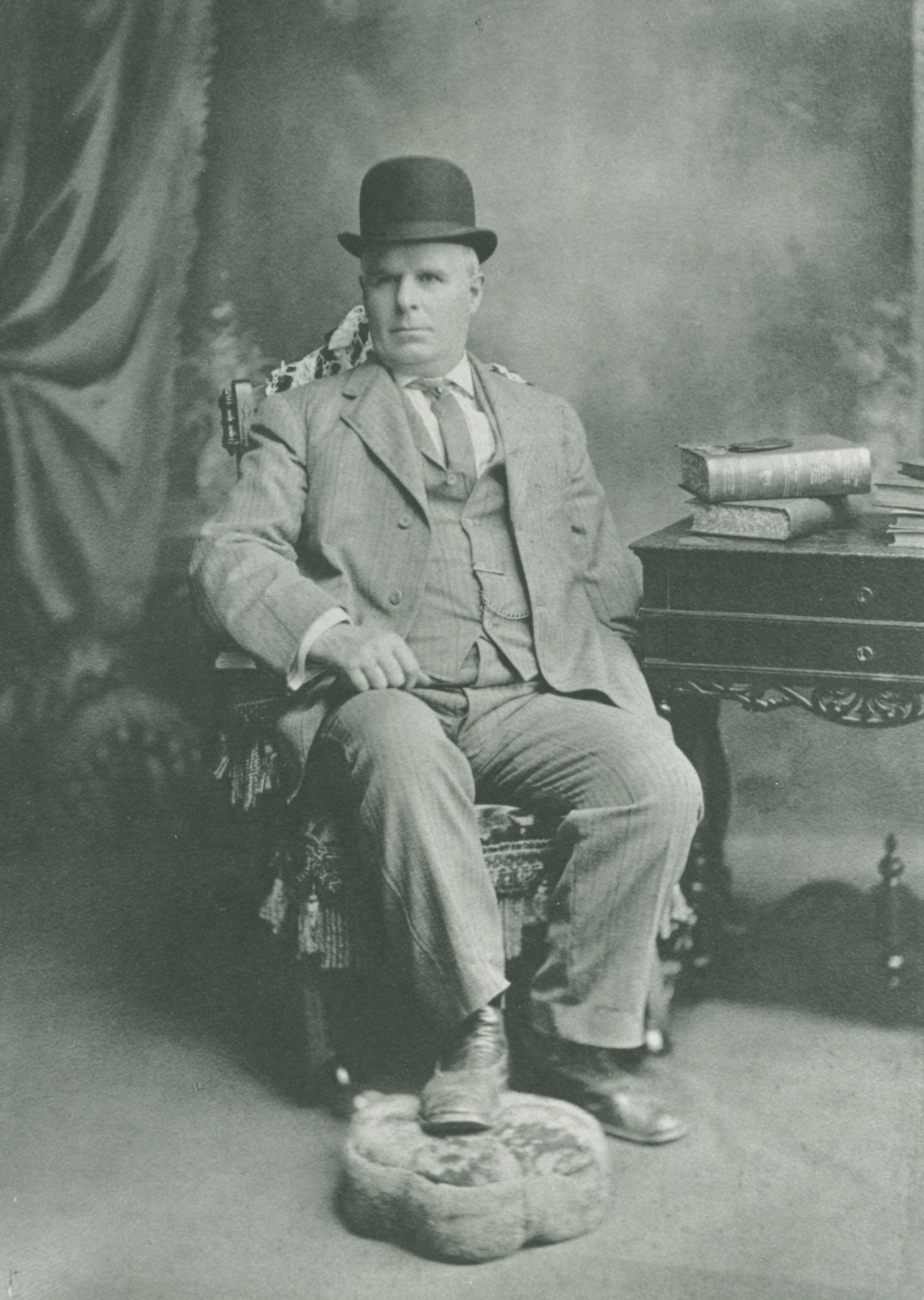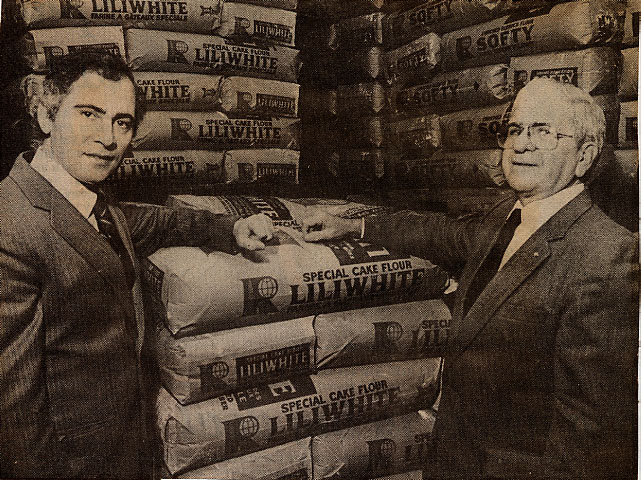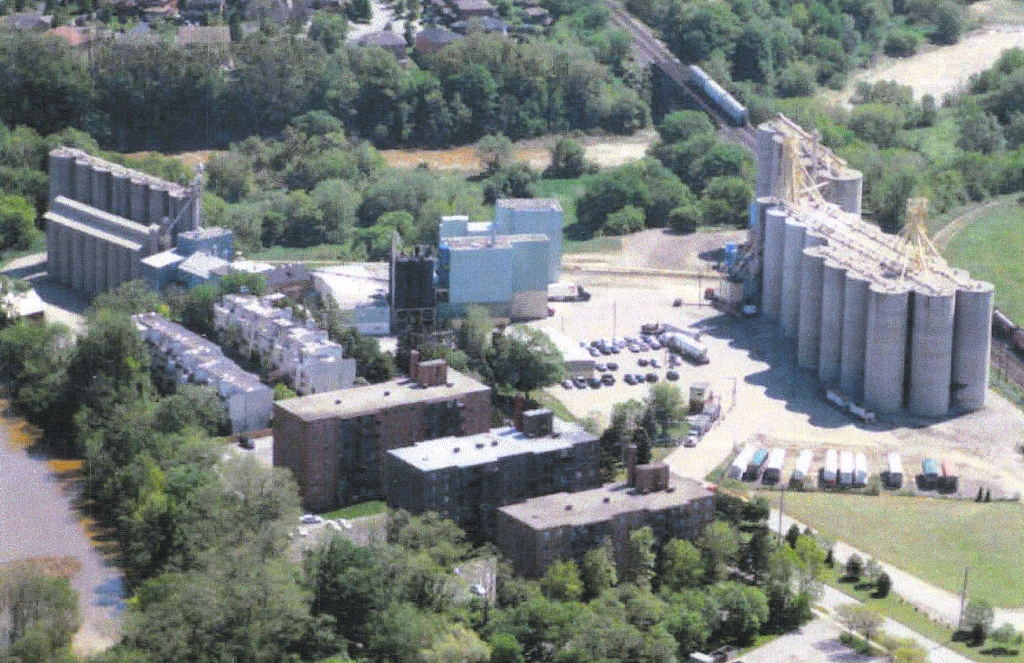Just to the north of the railroad tracks, where Mississauga Road becomes Queen Street at the south end of Streetsville, you will find Reid Drive, and you will also see one of the most visible landmarks in Streetsville – the large silos adjacent to the railway.
Reid Drive takes its name from Duncan Wallace Reid (1857-1941). The road itself led (and still leads today) to a mill. But the story starts much earlier than Duncan Reid’s involvement.

A mill is believed to have operated here along the Credit River since 1834, when water power was first harnessed by John Butchart.
In 1837 the site was acquired by John Beaty (1790-1842). John’s widow, Helen (nee Ker, 1792-1868), took over the management of the Beaty grist and flour mill after her husband passed away in 1842. “Hetty” was known as a formidable and dominant business woman at a time when it was very rare for women to be involved in industrial, commercial or economic enterprises. In 1861 the ownership of the mill was transferred to Helen’s sons, William, Robert and John Beaty.
The mill remained in the Beaty family until 1895, when the operation was leased by the aforementioned Duncan Wallace Reid, who then purchased it from the Beaty estate in 1902. Under Duncan’s ownership, the mill was initially named the Credit Valley Flour Mills, although locally it was known as Reid Milling.

Duncan Reid revitalized and expanded the business, introduced modern machinery, and played an important role in the surrounding community both through the services provided and employment. Duncan was succeeded by his son, Frank G. Reid (1884-1966).

In 1964 the mill was converted to electricity, after having operated by water power for around 130 years. Over its time, Reid Milling became very community oriented, sponsoring youth baseball, soccer and hockey, and supporting the Streetsville Bread and Honey Festival.
In 1969 the mill was purchased by the Matthews-Wells Company Limited, which was amalgamated into the Christie, Brown and Company, Limited. During this transition, the name of Reid Milling was retained, and a third generation of the Reid family continued involvement with the mill with vice president Frank J. Reid (1921-2008) and sales manager Donald Reid (1924-1978).

In 1984 ownership formally transferred to Nabisco Brands Ltd. In 1998 the name of the mill was changed from Reid Milling to Nabisco Milling, and in 2000 it became part of Kraft. By 2012 the mill was operated by Mondelez International.
In 2015 the mill was acquired by Ardent Mills, who continue to long tradition of flour milling in Streetsville. Today Ardent Mills, the former Beaty-Reid mill, is largest soft wheat milling operation in Canada, and together with nearby ADM Milling on Barbertown Road (which we will look at in next week’s article) provides an important link to our industrial heritage in Mississauga.
Within the modern mill complex, the historic Beaty-Reid Mill remains. And as for Reid Drive itself, the road predates the involvement of the Reid family. The road appears on the 1859 Tremaine Map of Peel County, and in the 1877 Historical Atlas of Peel County the road is simply called “Road to Beaty’s Mill”.
It stands to reason that the road has likely been in existence as the access point to the mill site for as long as a mill has operated here. As such, the road likely dates back to the 1830s, although it takes it modern name from Duncan Wallace Reid and the prominent Reid family in connection to their significant chapter of involvement with the mill.
In 2004 the Ontario Heritage Trust unveiled a heritage plaque commemorating the history of Reid Milling.



https://www.modernmississauga.com/main/2021/1/20/the-history-of-mississaugas-reid-drive



Comments are closed.